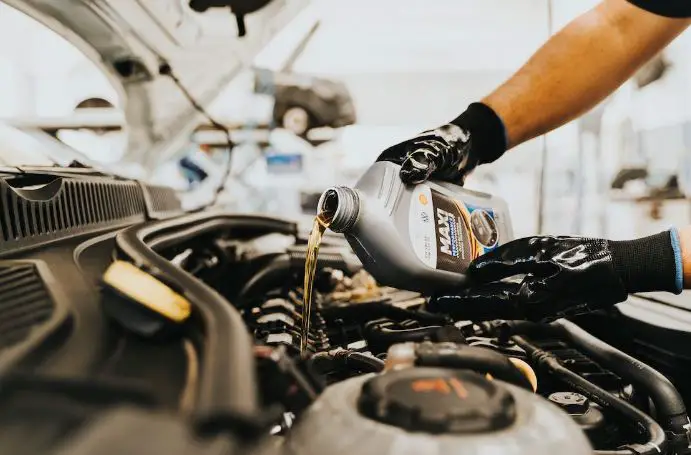When you drive a car, the engine gets hot. The cooling system is designed to remove the heat from the engine so it can continue to run safely. In this blog post, we will take a look at how an engines cooling system works and how long it takes for an engine to cool down after you have driven it. We will also discuss what can happen if an engine overheats and how you can prevent your car from overheating.
Let’s take a look!
Why Does A Car’s Engine Get Hot?
A car’s engine generates heat while it operates because of the combustion process that takes place within it. When fuel is combusted within the engine, it releases energy in the form of heat. This heat is then transferred to the engine’s cooling system, which helps to regulate the temperature and keep the engine from overheating.
The amount of heat generated by an engine can vary depending on a number of factors, such as the type of fuel being used, the efficiency of the combustion process, and the overall design of the engine. However, all engines will generate some amount of heat while they are running.
There are a few reasons why it is important for an engine to generate heat. First, heat helps to improve the efficiency of the combustion process. When an engine is cold, the fuel may not burn as completely or efficiently as it could. The heat generated by the engine helps to raise the temperature of the air and fuel mixture, which can make the combustion process more complete and efficient.
Second, heat helps to keep the engine components from wearing out too quickly. The constant expansion and contraction that occurs within an engine can cause metal parts to fatigue and wear down over time. The heat generated by the engine helps to keep these parts from expanding and contracting too much, which can help to prolong their life.
Third, heat can help to improve the performance of an engine. In cold weather, an engine may have difficulty reaching its full potential power output. The heat generated by the engine can help to warm up the air and fuel mixture, which can make it easier for the engine to achieve its full power output.
How Does The Cooling System Work To Keep Engine Temperatures Optimal?
The cooling system in a car is responsible for keeping the engine temperature at an optimal level (most carmakers aim for an operating temperature of between 195-220 degrees Fahrenheit). It does this by circulating coolant through the engine to absorb heat, and then dissipating that heat through the radiator.
The coolant itself is usually a mixture of water and antifreeze, which helps to lower the freezing point of the mixture so that it can more effectively remove heat from the engine. The radiator is typically made of aluminum or another metal that is good at conducting heat, and it is mounted in front of the engine where airflow can help to cool it down.
There are also fans located near the radiator that help to move air across it and further facilitate the cooling process. When everything is working correctly, the coolant will circulate through the engine and then back to the radiator where it will be cooled down and ready to repeat the process.
How Long Does It Take For A Car To Cool Down Once Stopped?
It takes around 30-40 minutes for a car’s engine to completely cool down after it has been switched off. The car will begin to cool down immediately after the engine is turned off, but the process will be slowest in the first few minutes. There are several factors that affect how quickly a car’s engine will cool down. These include the size of the engine, the ambient temperature, and whether or not the car is moving.
There are several things that a car does to help cool down its engine. The most important of these is the cooling system. The cooling system circulates coolant around the engine to absorb heat. Once the coolant has absorbed enough heat, it flows through a radiator where it is cooled by air flowing over the radiator.
Another way that a car helps to cool its engine is by using a fan. The fan blows air over the engine and helps to remove heat.
The size of the engine also affects how quickly it will cool down. A larger engine will take longer to cool down than a smaller one. This is because there is more mass for the heat to spread through.
The ambient temperature also plays a role in how quickly an engine will cool down. If it is cooler outside, the engine will lose heat faster than if it is warmer.
How Can A Car’s Engine Overheat?
One of the most common causes of engine overheating is a coolant leak. Coolant leaks can occur in a number of places, including the radiator, water pump, and hoses. A coolant leak will cause the engine to run hot because it’s not able to properly circulate the coolant throughout the system.
Another common cause of engine overheating is a faulty thermostat. The thermostat is responsible for regulating the flow of coolant through the engine. If it’s not working properly, the engine can overheat.
Finally, an engine can overheat if it’s not getting enough air flow. This is usually caused by a dirty or clogged air filter. If the air filter is blocked, the engine can’t breathe and will overheat.
What Should You Do If Your Engine Is Overheating?
If your car’s engine is overheating, it is important to take action immediately to avoid damaging the engine. Here are some steps you can take:
1. Pull over and turn off the engine: As soon as you notice that the temperature gauge is moving into the red zone, pull over and turn off the engine. Do not attempt to drive any further.
2. Open the hood and check the coolant level: Once the engine is off, open the hood and locate the coolant reservoir. Check to see if the coolant level is low. If it is, add more coolant until it reaches the full line.
3. Wait for the engine to cool down: Let the engine cool down for at least 30 minutes before restarting it. Do not open the radiator cap while the engine is hot, as this could cause serious burns.
4. Check for leaks: Inspect the engine bay for any coolant leaks. If you see any, it is important to get them fixed as soon as possible.
5. Restart the engine: Once the engine has cooled down, start it up again and pay attention to the temperature gauge. If it starts to climb into the red zone again, pull over and repeat steps 1-4.
If your car’s engine overheats repeatedly or if you are unable to get the temperature down after following these steps, it is best to take it to a mechanic for further diagnosis. Overheating can be caused by a number of issues, such as a faulty radiator, low coolant levels, or a problem with the water pump. A mechanic will be able to pinpoint the cause of the overheating and make the necessary repairs.
Go Home










[…] cars are fuel powered. They get power by burning gas (petrol or diesel) and use an indirect route to move the car. The power first flows to the […]
[…] high boost levels can also cause the engine to overheat. This is because the increased pressure in the cylinders causes the engine to work harder, which […]